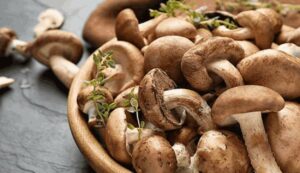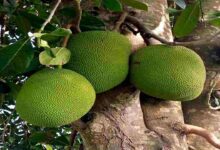Mushroom Cultivation: Know how to identify poisonous mushrooms…
Mushroom Cultivation: Although mushrooms are a nutrient-dense food, many varieties are toxic and may be devastating to one’s health. The identification and differentiation of dangerous or inedible mushrooms from edible ones will be covered in this article.

Conventional techniques for detecting toxic mushrooms
1. Take note of look and color
Bright hues (yellow, orange, and red) are often observed in poisonous mushrooms. The top portion of many toxic mushrooms, including Amanita species, may be white, glossy, or speckled. The mushroom may be deadly if its gills are dark and become black fast when touched.
2. Determine the odor
Poisonous mushrooms may smell strongly of sulfur or ammonia, but edible mushrooms have a subtle, pleasant scent. Don’t eat the mushroom if it smells bad.
3. Milky juice emission
Some mushrooms release a white liquid that resembles milk when they break. The mushroom could be toxic if its milky nectar burns or has an unpleasant flavor.
4. When touched, mushrooms may burn or itch
When handled, the skin of toxic mushrooms may cause burning or itching in the hands.
Myths vs Facts Regarding Poisonous Mushrooms
Many misconceptions exist about the differences between toxic and edible mushrooms, including:
Myth: The colors of poisonous mushrooms are usually vivid and appealing.
Fact: Pure white or plain brown species may be poisonous.
Myth: Poisonous mushrooms won’t be eaten by snails, insects, or other animals.
Fact: A mushroom may still be harmful to you even if it doesn’t hurt another animal.
Myth: Poisonous mushrooms turn black when touched by silver or onions.
Fact: When bruised or injured, all mushrooms become black.
Myth: Poisonous mushrooms have an unpleasant flavor and odor.
The truth is that some individuals claim that toxic mushrooms have a delicious flavor.
Myth: Cooking makes any mushroom harmless.
Fact: Cooking, canning, freezing, or drying toxic mushrooms won’t make them harmless.
Tests and indications from science
Test for spore prints
Place the mushroom’s gills on either white or black paper to see what color the spore print is. Poisonous mushrooms often have dark brown, black, or green spore prints. Edible mushrooms often have light-colored, cream-colored, or white spore prints.
Tests with chemicals
Poisonous organisms like Amanita contain poisons (like amatoxins). To detect them, specialized chemical assays are available.
Speak with a fungal specialist
Consulting with specialists in mushroom species identification is the safest course of action.
Potential signs of consuming toxic mushrooms
Initial signs and symptoms
diarrhea, stomach discomfort, vomiting, and nausea. After consuming the mushroom, these symptoms might show up six to twelve hours later.
Severe symptoms
harm to the kidneys and liver. central nervous system effects that result in headache, lightheadedness, and unconsciousness.
Death risk
Certain mushrooms, including Destroying Angel and Death Cap (Amanita phalloides), are very poisonous and may be lethal if eaten.
Measures to take while collecting mushrooms
Understanding of the natural world
Common locations for poisonous mushrooms include wet areas, decayed wood, and under leaves. If you are unfamiliar with a mushroom’s native environment, avoid touching it.
Don’t assume that all mushrooms are safe
Similar-looking mushrooms may be both edible and toxic. For instance, the distinction between Amanita and Agaricus species.
Never gather mushrooms without expertise
Instead of depending on local customs or folklore, base your judgments on scientific understanding.
Frequently toxic types of mushrooms
Death Cap (Amanita phalloides)
One of the deadliest kinds of mushrooms is this one.
Agaric fly, Amanita muscaria
Hallucinations and other mental problems may result from consuming it.
Margata Galerina
This little mushroom is poisonous.
Dealbata Clitocybe
It includes muscarine, a toxin that may have detrimental consequences.
Avoid using home cures
The idea that using a silver spoon to saute mushrooms would reveal if they are toxic is a fallacy. Poisonous components cannot be detected when mushrooms are cooked in milk. Toxins are not removed when mushrooms are boiled in water.
Advice on choosing mushrooms safely
Purchase only from reputable stores or supermarkets. In other words, only purchase mushrooms from approved suppliers.
Obtain instruction.
Participate in training courses or seminars to identify mushrooms.
Examine books on mushrooms.
Examine trustworthy reference materials that provide detailed descriptions of both edible and toxic mushrooms.

